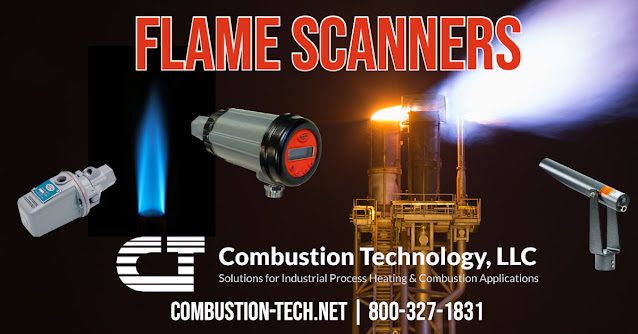In combustion applications, flame scanners (flame detectors) validate the existence of flame in many hazardous environments and applications, such as hydrogen stations, industrial heating systems, drying systems, industrial gas turbines, combustion chambers, and industrial flares. Their use is critical to ensure that any fuel entering combustion equipment is consumed and not accumulating unburned, presenting a safety hazard.
Unique flame features distinguish the types of flames produced by various burners and compounds. Proper flame detection requires knowledge of the flame itself, its emissive properties, and other features. Apart from temperature, flame scanners and detectors often use radiation and the production of ionized gas molecules to detect the presence of the flame.
Modern scanners detect the presence or absence of flames that emit ultraviolet radiation (UV). Typical fossil fuels which emit UV include natural gas, propane, methane, butane, kerosene, light petroleum distillates, and diesel fuels. For burners firing steam-atomized oil or pulverized coal, use infrared (IR) scanners. In some situations, specific photoelectric detectors may detect a distinctive flicker in any flame invisible to the naked eye.
For over three decades, Combustion Technology has applied flame scanning and detection solutions and equipment for process heating applications. Call them with any flame detection requirement.
http://combustion-tech.net
800-327-1831
800-327-1831
